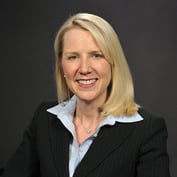As a rule, I don’t respond in print to responses to my columns. I had my say, and anyone who takes exception to that (I know it’s hard to imagine) can have theirs in a letter to the editor. That seems fair, and it’s usually more than enough on any one subject, anyway. The only exceptions I can remember making in my days as an editor were to letters that were so egregiously misleading (I’m thinking back to the limited partnership days, or maybe an insurance company or two) that a clarification to readers was necessary.
I’m going to make an exception again in the case of my NAPFA column last month, but for a new reason: the e-mail response I’ve received from NAPFA members has been so overwhelmingly supportive and expansive on my theme that I now realize I got only half the story–most importantly, why NAPFA matters anyway.
The NAPFA response to my column comes from chair Jamie Milne, chair-elect Peggy Cabaniss, and CEO Ellen Turf in a letter to the editor (page 14). All three are good people whom I’ve known for years, and I don’t for a minute doubt their sincerity or dedication to what’s best for NAPFA. In fact, I’d be inclined to ignore their response as a typical bureaucratic response, except for a few points that came up again and again in e-mails from NAPFA members.
First, let’s take a look at those pesky membership numbers. I refer you to the chart contained in NAPFA’s letter which is the clearest illustration of the problem that I’ve yet seen. And as NAPFA members nearly unanimously pointed out to me, the issue goes beyond my befuddlement at not having gotten a straight answer on membership from NAPFA for years.
According to NAPFA’s numbers, there are currently 1,264 members. That’s consistent with figures I heard at the NAPFA National Conference. It appears to be the number NAPFA currently represents to journalists and others when they ask, as I did: How many members does NAPFA have?
Now, let’s look at what’s behind that figure. In their letter, Milne et al. say: “Let’s make it clear, all individuals associated with NAPFA meet the Fee-Only definition, agree to be bound by the NAPFA Fiduciary Oath, and follow our standards and guidelines.” I understand that NAPFA requires a letter from each of these “members” confirming their fee-only status. Yet, I have some difficulty understanding how students, academics, and financial services affiliates can be “fee-only.”
Even more troubling, I’m told by NAPFA members who contacted me–and Ellen Turf confirmed it–that only the top two categories–NAPFA-Registered Financial Advisors and Provisional Members–are required to meet NAPFA’s standard to offer comprehensive financial planning. That means 285 of these members, 22.5%, don’t meet NAPFA’s standards, and 26.7% (337) don’t qualify as NAPFA advisors.
In fact, NAPFA members told me in e-mails (and Turf confirmed) that only NAPFA-Registered Financial Advisors and Provisional Members are allowed to call themselves NAPFA members, yet when asked, NAPFA itself will cite a membership number that includes all the rest. Is this misleading? I’ll let you be the judge, but I will say that the vast majority of NAPFA members who e-mailed think so.
So what, I hear you say. If true, an association fudging its membership rolls to appear bigger is hardly news. Too true. Consider also that one NAPFA member e-mailed to say that you don’t even have to have any clients to be a NAPFA-Registered Financial Advisor (that NAPFA would even send you a sample financial plan upon which to model your submission). Can it be that NAPFA is so caught up in a drive to increase membership that its leadership’s standards and judgment have been eroded? It wouldn’t be the first time, in the financial planning community.
Whatever the reason, the NAPFA membership numbers bother me because they come from NAPFA. Over many years, I’ve come to the conclusion that most NAPFA members–like me in my own way–have spent their careers battling the obfuscations, quibbling, and downright falsehoods the financial services industry uses to keep clients from understanding what’s really going on with their finances.
In my view, anyway, NAPFA has been the bastion of integrity in financial advice: zealously standing for full disclosure and no-nonsense standards for what it means to be paid directly and solely by the client. While much of the advisory community has worked to blur that line beyond recognition, NAPFA has been uniquely clear. So to find out this same organization is playing a little fast and loose with its membership numbers, that it, too, has feet of clay, is disappointing to say the least. Not only to me, but to a large portion of NAPFA members, if my e-mails are to be believed.
The Opportunity for NAPFA
The bigger question, of course, is the one that most readers are undoubtedly asking: Why does NAPFA matter anyway? The answer came in another e-mail from a long-time NAPFA member who wrote: “Compliance for small firms, such as mine, is a real nightmare. I spend at least 10% of my time dealing with all of the recordkeeping. NAPFA and other financial planners must fight to continue to level the playing field in this area.”








 August 01, 2005 at 04:00 AM
August 01, 2005 at 04:00 AM










